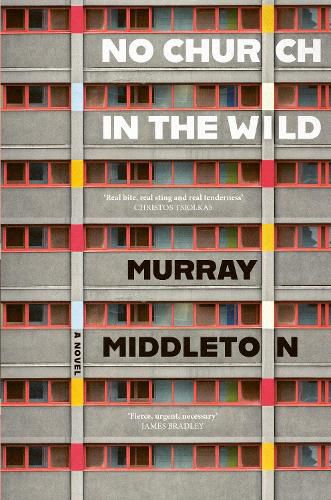No Church in the Wild by Murray Middleton
Murray Middleton won the 2015 Australian/Vogel’s Literary Award, an award for an unpublished manuscript by an author under 35 and known for uncovering writers like Tim Winton, Kate Grenville, and Andrew McGahan. The resulting book of Middleton’s award, When There’s Nowhere Else to Run, was very well received, and led to him being named one of the Sydney Morning Herald’s Best Young Novelists in 2016. In an interview with that newspaper at the time, Middleton said, ‘Your first book is great – you write about the burning ideas you want to get out … Your second book is the most important – it’s what you really want to say.’ No Church in the Wild is that book, and indicates further the fine calibre of this writer.
This novel is a multi-perspectival account of a multicultural community in Melbourne’s inner west. Its key characters are students, teachers, and police, whose lives intersect in a school near housing commission towers, and at training for a planned trip to the Kokoda Trail, which has been imagined as a community-building exercise to bridge the gaps between all these stakeholders. Each character is unique with a complex backstory and life off the page, and they are so far from types that they feel just like real people. The dialogue is profane and vernacular, and brings plenty of energy and excitement to the reading experience: it feels like the theatre of life, and this veracity is testament to the author’s research and lived experience in the communities he represents here.
At its core, this book is a big-thinking novel with its eye on the detail. What Middleton ‘really wants say’ in this, the important and career-making second novel is, I think, to show a Melbourne in a state of changing cultural diversity, of intergenerational trauma, of privilege and its lack, about a city awash with drugs and violence and conflict between police and communities unfolding right in the middle of inner-city gentrification’s pressures, of hard-working people caught in cycles of poverty, and well-meaning people in positions of power who want to contribute positively but are themselves victims of the structures they work in and their own lives’ complications, and a cohort of young people staring down the barrel of a bleak future. But importantly, Middleton does not want to show this Melbourne in the sense of spectacle or as exceptional, but to make it ordinary, and tell its story through the eyes of real people who call this place home. An outstanding book, from an emerging – no, strike that – a now-fully-emerged chronicler of our city.


